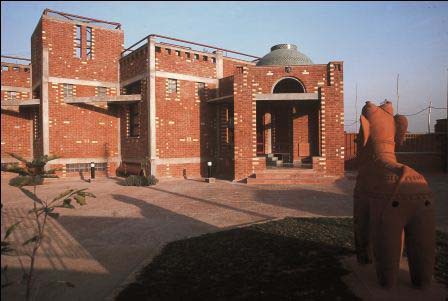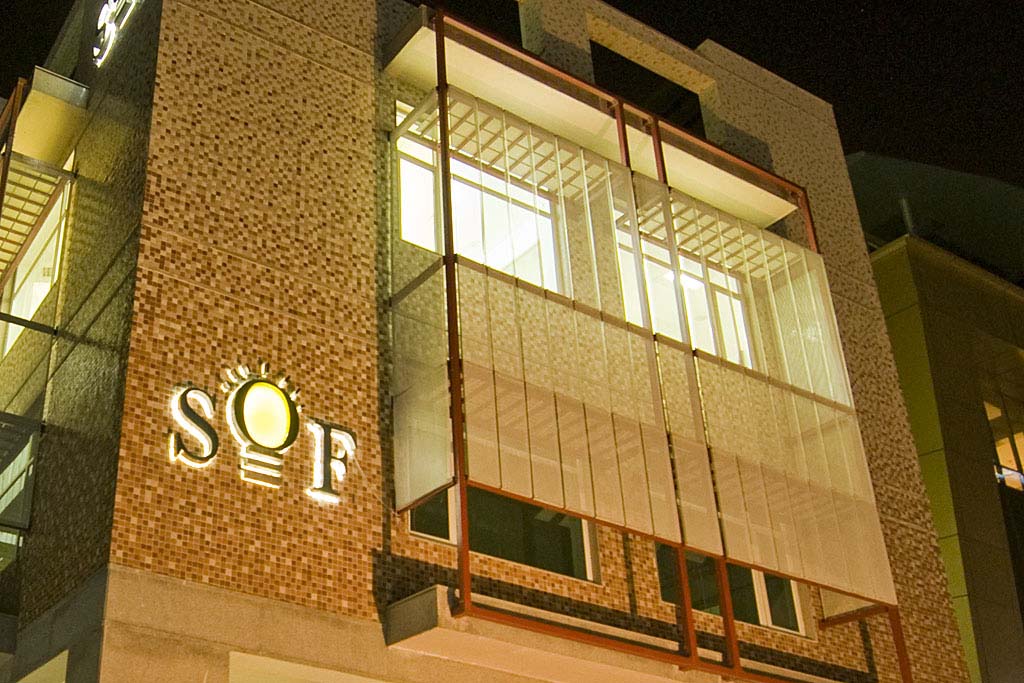Space design consultants
Graduated in architecture from School of Planning & Architecture, New Delhi in 1969. He spent two years studying pre-fabricated housing in Denmark. From 1973 to 1989 he was full-time faculty of architecture at School of Planning & Architecture, New Delhi. In 1984 he completed his work for Ph.D. at the Center for Energy Studies, Indian Institute of Technology, Delhi. Among the special findings were the use of texture on buildings and the fragmentation of form to achieve cooling in the desert city of Jaisalmer.
He initiated the teaching of passive solar architecture and energy conservation in buildings at the School of Planning & Architecture, New Delhi. He continues to be a visiting professor in architecture and industrial design at the School of Planning & Architecture, New Delhi, advisor to the Delhi Urban Arts Commission and member of the Board of Studies and the Committee on Doctoral Programmes at SPA. He has been in the forefront of the green /energy efficient building movement in India and is a member of the Technical Advisory Committee for Griha- the national green building rating system. He is also a founder member of Association for Development and Research of Sustainable Habitats (ADaRSH).
Vinod Gupta worked on architectural research projects with M.N. Ganju from 1975 to 1983. Together with Rasik Bahl, he founded Space Design Associates in 1983 and has been involved in a number of research projects incorporating solar heating and natural cooling in buildings. The hostel buildings at Jodhpur University and at the Indian Institute of Technology, Delhi, and the campus for the Solar Energy Centre at Gurgaon, near Delhi are his well known solar passive projects.
The office building for CMC Ltd. at Bombay is famous as the first intelligent building of India where energy conservation is achieved by application of microprocessor control technology. A recent project is a housing scheme for the National Media Centre near New Delhi, which addresses the issues of choice in housing and the environmental impact of large-scale development. Vinod Gupta’s recent work is the campus for NIIT University at Neemrana, Rajasthan. This campus redefines the way buildings ought to be built for the future in the desert situation. It deals with traditional architectural elements in a completely new way.
Vinod Gupta is concerned about the impact of modernisation of building technology on the quality of workmanship and the loss of livelihood for traditional craftsmen. This concern is reflected in his designs, many of which use large amounts of traditional crafts.
The design of furniture for ITES offices has occupied Vinod Gupta's attention for the last decade. Going beyond the commonly available, mass-produced, generalised furniture for offices, his designs show greater respect for customer requirements, functional efficiency and ergonomics. The office interior for UBEST at Calcutta shows a unique system for organising a modern office. He has completely unique solutions to offer for the problems of office workers in general and ITES workers in particular. He has devised a new system of office furniture that promotes movement as opposed to the static posture that all other furniture systems promote.
From early beginnings in 1975, Vinod Gupta has been working with environment friendly, energy efficient green architecture. The concern with sustainable design and development occupies much of his time now. From individual buildings he has now moved on to larger campuses and urban developments.



